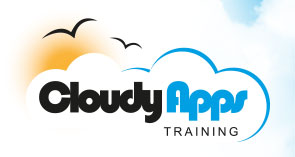


Cloud Computing
Cloud computing is both a framework and a technology. It is both new and exciting, and its future success depends on the development of novel applications, or the porting and scaling of existing data intensive and web applications.
Background:
The Cloud , generally, refers to the World Wide Web, or Web or Internet for short.
From simple beginnings in the 1980's based on the integration of hypertext documents and TCP/IP networking the Web has evolved spectacularly into its present form, which itself is, almost certainly, a starting point for even further developments. The Cloud also alludes to Cloud Computing. Cloud computing itself can be thought of as a development of Client - Server computing and the technologies that it gave rise to such as computing using remote procedure calls (RPC, DCE RPX, DCOM), broker based distributed computing architectures such as CORBA, and the newer web service based distributed computing technologies such as SOAP and REST. As well as Cloud computing frameworks such as Amazon's EC2 (Elastic Comput Cloud) and OpenStack it also embraces the view of the internet of things .. an internet formed by connecting lots of devices both big and small into one huge network. Again, history repeats itself, as it could be argued that one of the original visionary groups behind the internet of things was James Gosling's team working on Green computing in the early 1990's, research that led, eventually, to the development of Java. Another strand in this “epic saga” is the development and evolution of Microcontrollers from relatively simple and expensive 8 bit devices to the powerful and relatively cheap 8, 16 and 32 bit peripheral rich devices available today. Add in the desire to provide access to powerful computing technologies to creative artists and to schoolchildren we come, via Processing, to the Arduino and its various offshoots and also the RaspberryPi and its various relations such as Gumstix, BeagleBone and Pandaboard. Following yet another thread leads us to Smart Sensors, Smart Sensor based AdHoc networks and applications of these to the environment and to “intelligent” urban systems (Smart Cities). On still another dimension there are developments associated with data visualisation, data analytics and social networking.
Overview:
The Wikipedia entry on Cloud Computing uses the analogy of an electricity grid to describe the basic concepts underlying cloud computing "Cloud computing provides computation, software, data access, and storage services that do not require end-user knowledge of the physical location and configuration of the system that delivers the services. Parallels to this concept can be drawn with the electricity grid, wherein end-users consume power without needing to understand the component devices or infrastructure required to provide the service."
The attraction of cloud computing is the in the possibility of adding extra IT capacity, or data processing capabilities or access to new applications without having to invest in extra infrastructure, having to train new admin staff, or having to purchase new software, but, instead being able to make use of a usage or subscription-based service. This is now a realistic possibility thanks to the widespread availability of broadband internet connectivity and web service oriented technology.
Applications can be accessed either via a web browser, or by applications that make use of the basic HTTP protocol such as those based on RESTful services (which do not necessarily need a web browser) , or via thin client technologies (Linux, or Windows based).
The various services that constitute a cloud computing infrastructure may be either private, or, commercial, delivered through shared data-centers. The courses outlined below cover the range from a high level technical overview, through to cloud service deployment and application framework development on either Linux or Microsoft Windows platforms.
As a training and consultancy company that learns from its customers and the pupils that they send on our courses some of our insights into the potential of cloud computing has come from running technical system administration and configuration oriented courses to companies such as Rackspace and NewEgg. Cloud computing frameworks are amazingly complex technologies and it is a real joy to see them in action, and to witness their flexibility and scalability. As well as providing a range of standardised cloud computing courses we are open to challenges and requests for more challenging courses.